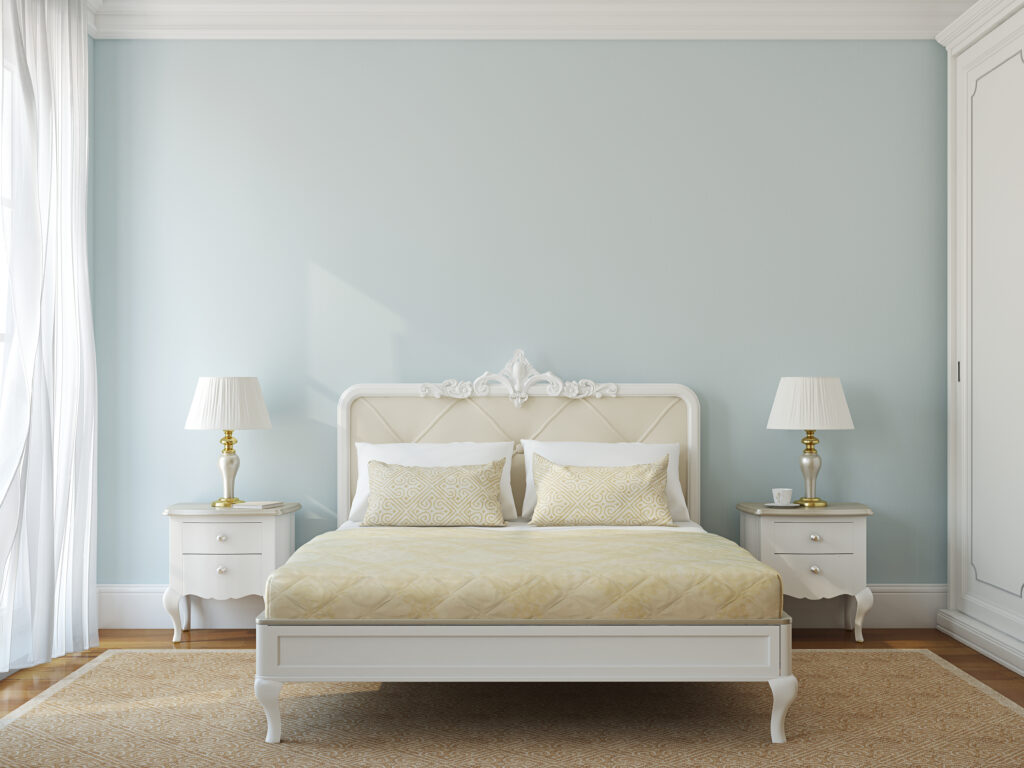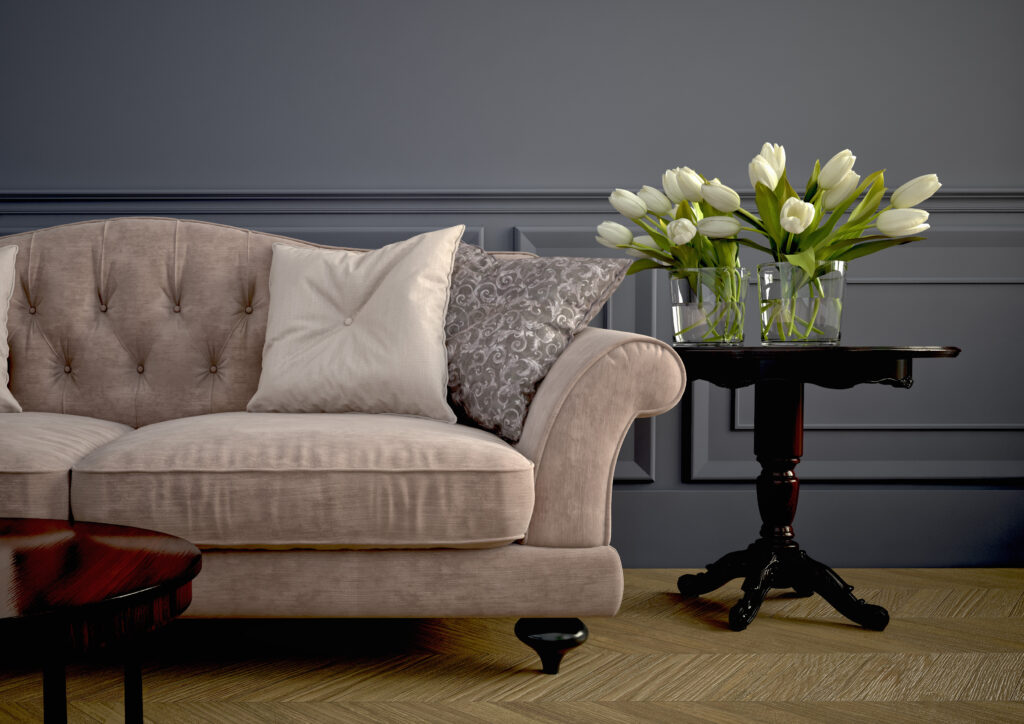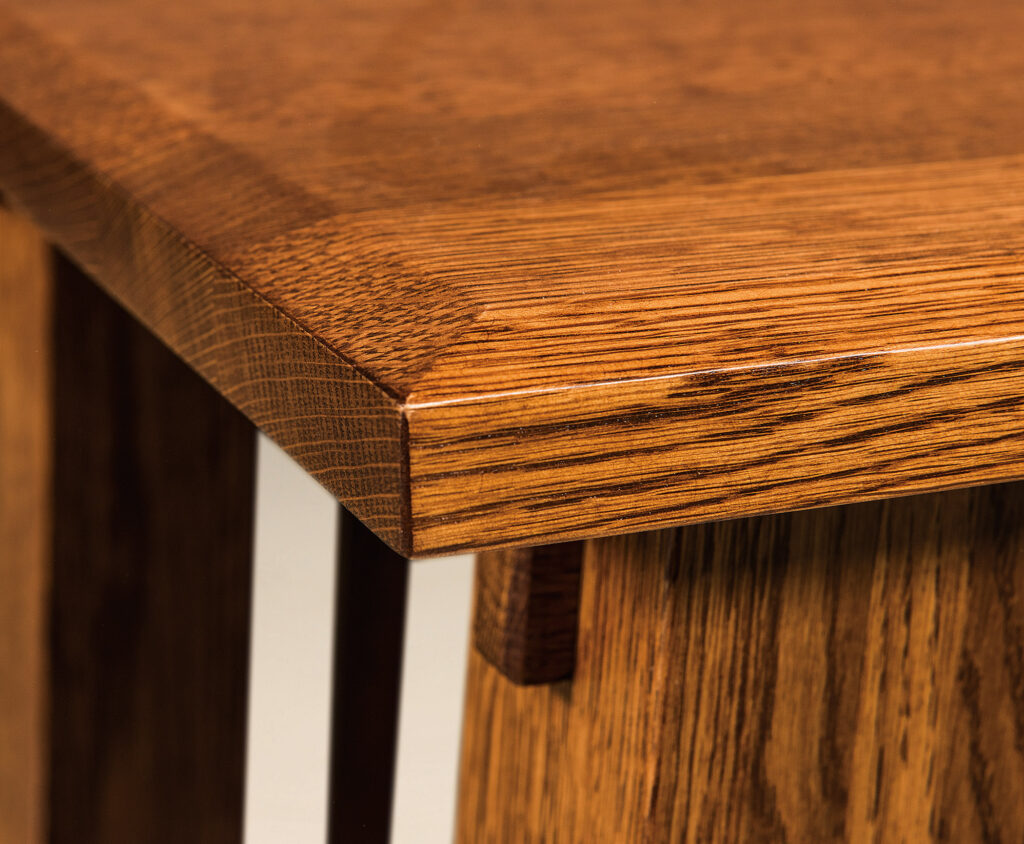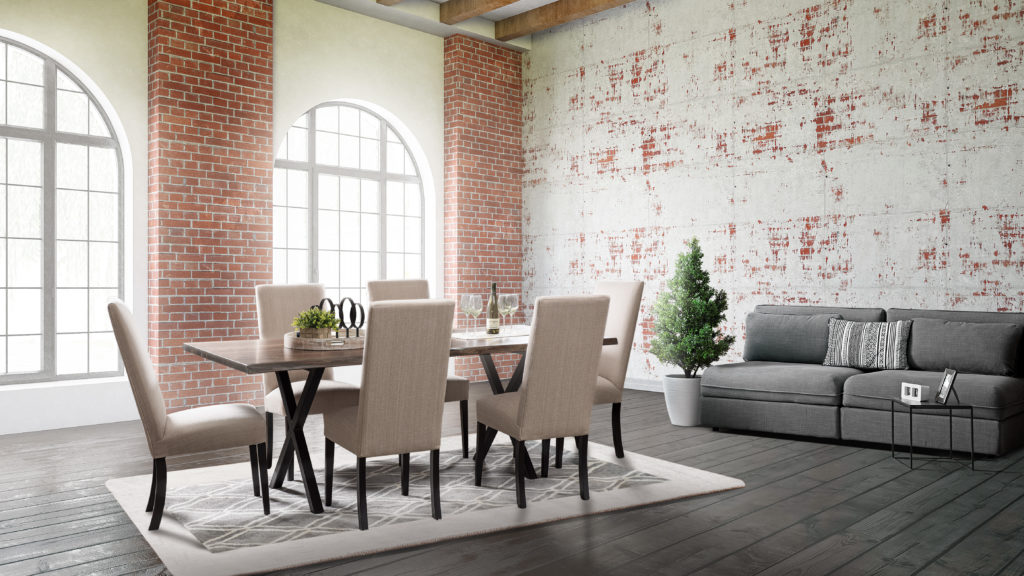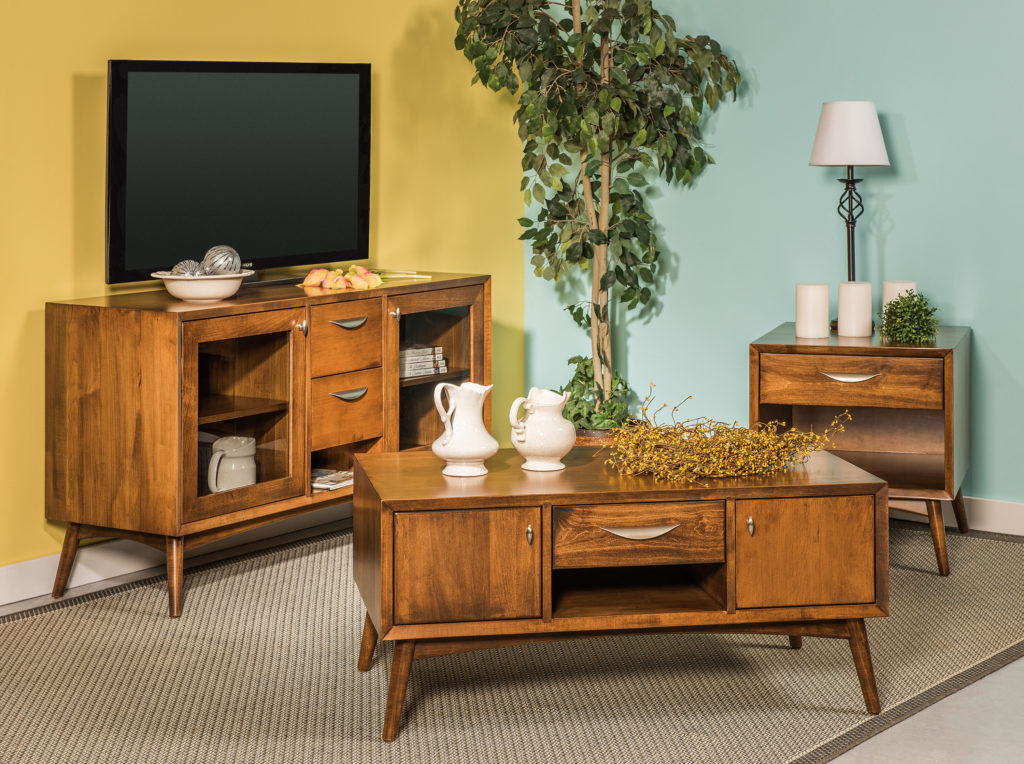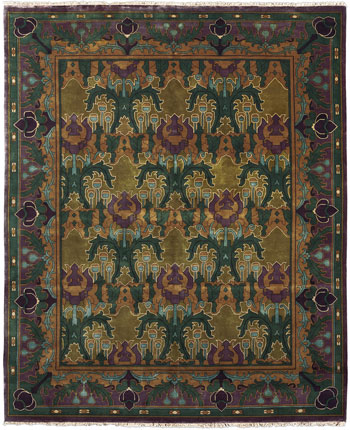Both Arts and Crafts and Craftsman styles of furniture have made their mark on American interior design since the mid 19th century. These classic styles have remained as prominent features and dependable pieces in people’s homes since, demonstrating their excellent style that lasts. Each type has its strengths, so understanding the differences can help you pick the aesthetic that best suits your style.
History
Though the style has some defining characteristics, Arts and Crafts emerged as a movement in response to the Industrial Revolution. People were longing for the uniqueness that hand-crafted furniture provided as factories mass-produced standardized furniture.
The movement began in Britain in the mid to late 19th-century as designers prioritized quality of not only function, but design and beauty. It made its way to the United States where Gustav Stickley developed a subset of the Arts and Crafts style known as Craftsman, where practicality, natural elements, and durability were valued.
Both styles became less popular in the 1920s, as Art Deco and Modernism styles grew in popularity. By the mid-20th century, though, people were returning to the Arts and Crafts and Craftsman styles, incorporating the classic furniture into their rooms. Since then, they have become statement pieces that are commonly used in American homes.
Arts and Crafts Style
The Arts and Crafts style maintains some key characteristics that are apparent in each piece of furniture:

- Handcrafted
The charm and intentionality that is clear in handcrafted pieces is timeless. Being able to not only see the hand of the craftsman, but be able to appreciate the attention to detail, makes the Arts and Crafts style an exceptional choice. - Simple But Functional Designs
Though the designs themselves may not be the most ornate, having a practical design that fits into a person’s daily usage is always going to be dependable. Though the priority tends to be functionality, the pieces often still showcase some detail or uniqueness such as carvings or inlays. - Quality Materials
Though Arts and Crafts pieces may tend to be lighter than their counterparts, they by no means sacrifice quality furniture. Durable and quality materials – like oak, cherry, and walnut – result in sturdy furniture that will last a lifetime. - Natural Elements
Arts and Crafts not only uses good quality items, but it also highlights and celebrates the beauty of it; using things like oils and stains, for instance, emphasize the natural grain of the wood. This style will also often incorporate designs or patterns inspired by nature, or demonstrate elements like hand-painted accents.
Craftsman Style
Though the Craftsman style may have some overlap with Arts and Crafts, there are some aspects that make these forms recognizable:
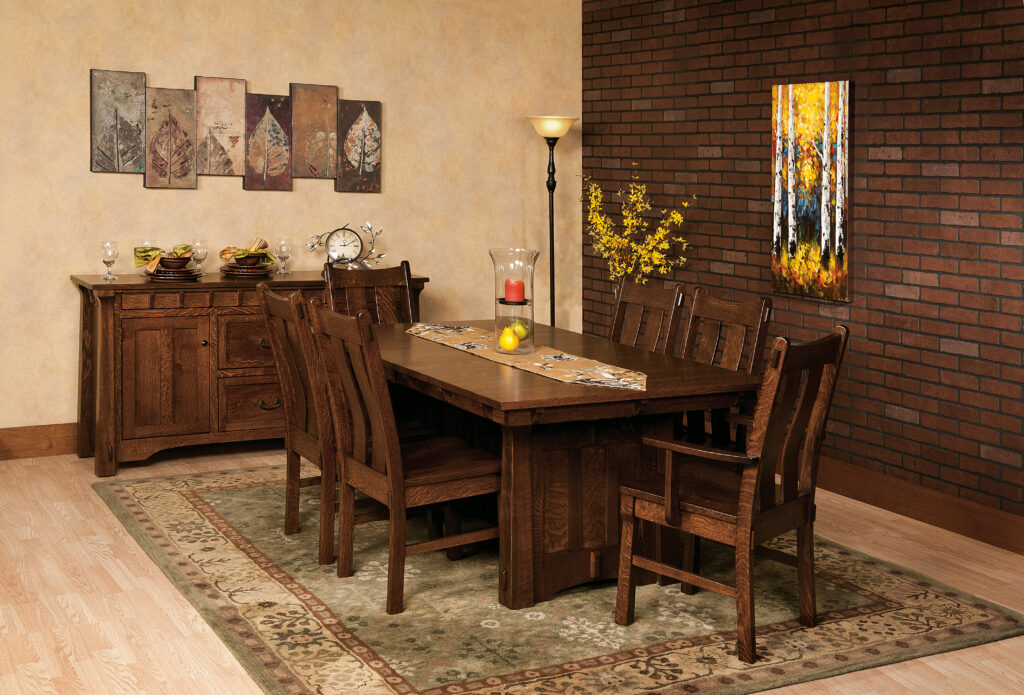
- Geometric Designs
While Arts and Crafts may have some more detail and design, Craftsman style keeps to more standardized, geometric shapes in their pieces. - Sturdy Function
Craftsman furniture can often be recognized by its more blocky build, including larger panels, wider legs, and slatted sides. These result in heavy, but very durable pieces, usually made with quarter sown oak. - Minimal and Simple
Though still incorporating natural and beautiful elements like Arts and Crafts furniture, Craftsman furniture tends to lend itself to functionality rather than ornamentation.
Picking the Right Style
Both the Arts and Crafts and Craftsman styles ground your home in timeless simplicity, each style offers its benefits for complementing your room’s aesthetic.
If you tend toward attention to detail, natural patterns, comfort, and influence from the Medieval or Gothic periods in your rooms, then Arts and Crafts is the way to go. If instead you prefer an open space, simple but functional furniture, minimalism, and bolder pieces, Craftsman furniture will more likely fit your needs.
At Sugar House Furniture, we have everything to suit your needs – from a wide range of handcrafted furniture with beautiful upholstery, to customizable pieces, you can make your space your own and express your unique style.


